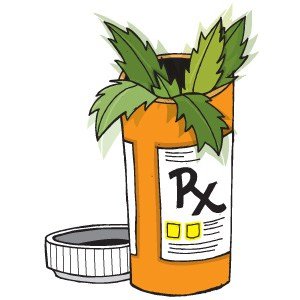
Legalizing Medical Marijuana Reduces Prescription Stimulant Use, Finds Study
According to a new study published in the International Journal of Drug Policy, the use of prescription stimulants is lower in states where medical marijuana has been legalized, compared to states where all marijuana use remains illegal. The study is titled Medical marijuana laws and medical and non-medical prescription stimulant use among a nationally representative sample of US adults: Potential spillover effects by sexual identity and gender.
For the study researchers examined the association between prescription stimulant use and state-level medical marijuana legalization laws.

“Medical prescription stimulant use was lower in MCL (medical cannabis legalization) states versus non-MCL states for heterosexual men (3.7 percent versus 4.6 percent) and women (4.2 percent versus 5.7 percent)”, states the study. “Bisexual men’s medical stimulant use prevalence was 4.2 percent in MCL states versus 9.9 percent in non-MCL states: among women, it was 7.3 percent versus 8.6 percent. Among bisexual men, non-medical prescription stimulant use was 5.6 percent in MCL states versus 8.1 percent in non-MCL states; for bisexual women, it was 6.0 percent versus 7.9 percent.”
They conclude by stating: “The ‘spillover’ effect of MCL enactment on the use of substances besides cannabis should be explicitly tested in future studies.”
Below is the full abstract of this study:
Background: Medical marijuana laws (MMLs) can impact marijuana and opioid use, but the relationship between MMLs and other drugs, such as prescription stimulants, remains unexamined. Because lesbian, gay and bisexual (LGB) individuals report higher levels of prescription stimulant use than heterosexuals, we explored the relationship between MMLs and past-year medical and non-medical stimulant use by sexual identity and gender.
Methods: We pooled 2015-2017 National Survey on Drug Use and Health data for adults (n = 126 463), and used survey-weighted multinomial logistic regression to estimate odds of past-year (a) medical prescription stimulant use, (b) non-medical prescription stimulant use and (c) non-medical versus medical stimulant use. We stratified by gender, adjusted for sociodemographic characteristics, and tested the interaction between MML state residence and sexual identity.
Results: Bisexual men had higher medical (6.4% versus 4.1%; aROR=1.93[1.29-2.88]) and non-medical stimulant use 6.6% versus 2.4%; aROR=2.23[1.44-3.44]) than heterosexual men. Bisexual women had higher non-medical stimulant use (6.8% versus 1.6%; aROR=1.54[1.23-2.93] than heterosexual women. Female (aROR=0.70[0.62-0.78]) and male (aROR=0.74[0.66-0.82]) heterosexuals in MML states had lower odds of medical stimulant use than in non-MML states. Bisexual men in MML states had lower odds of medical (aROR=0.36[0.21-0.61]) and non-medical stimulant use (aROR=0.48[0.29-0.81]) than bisexual men in non-MML states. Similar patterns emerged for bisexual women’s non-medical use (aROR=0.57[0.40-0.81]).
Conclusion: Prescription stimulant use was higher in non-MML states for most LGB subgroups. MMLs may differentially impact stimulant use, primarily for bisexual men and women. States enacting MMLs should consider potential impacts on drugs other than marijuana, especially among LGB populations.


